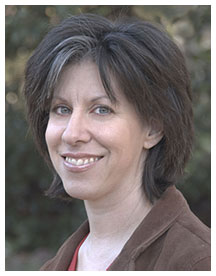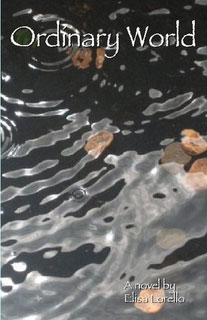 |
| Delivering the eulogy at LJM's wake. Photo: Amanda Navasero |
I also wrote in the Philippine Daily Inquirer about her profound influence on my writing (I was one of the Inquirer's two reporters when it started as a weekly, then when it turned into a daily, I became a desk editor). When the article came out on Boxing Day, it amused me that though I haven't used my maiden name 'Quimpo' for 27 years, my former Inquirer colleagues inserted it into my by-line: 'Candy Quimpo Gourlay'.
This visit brought me back to the world that I left behind since I became a writer of novels: a world of intense deadlines, cigarette smoke, clackety typewriters, too much coffee, and the everlasting hunt for a good angle.
 |
| The Inquirer newsroom pauses to remember LJM at a final remembrance service . I'm so glad I happened to be in the Philippines. |
It occurred to me that in story terms, this was the Ordinary World that I left behind, the way Luke Skywalker left the moisture farm in Tatooine for adventure, Dorothy left behind black and white Kansas for technicolor Oz, and Harry Potter left behind the cupboard under the stairs for magical Hogwarts.
The Ordinary World is the first stage of the Hero's Journey, first articulated by Joseph Campbell in The Hero With a Thousand Faces, and later revised by Christopher Vogler, in a famous seven-page memo he wrote while working for Disney. The Ordinary World introduces the hero's world before he or she goes on an adventure.
The hero's ordinary world is essential to the reader's understanding of the story because it provides the circumstances upon which the hero's adventure can be enjoyed and understood.
One of the reasons for my current trip to the Philippines is to visit the setting of my next novel --
an isolated community in the Cordillera mountains. I came thinking that the task at hand was to feel, to smell, to see, to make the place I'd set my novel in more believable.
 |
| The rice terraces of the Cordilleras at sunrise. |
 |
| Walking through mountains carved into rice paddies. The tubes are to deliver water from mountain springs to the lower paddies. |
 |
The Ordinary World is often defined as setting ... the place where a character begins an adventure. But it would be a mistake to focus on it as a bit of geography or a bit of background information.
The Ordinary World is more than geography and backstory. The Ordinary World is context.
Adventure lies in how the characters leave or change the Ordinary World. Without knowing the Ordinary World of a character, it can be hard for the reader to connect with the hero's adventure.
Readers want to be thrilled, they want to be moved, they want to care about what happens to the hero. Without seeing the contrast between the hero's Ordinary World and the world of the adventure, the reader cannot feel the heartbeat of the story.
We are extra delighted by Sophie's adventure with the Big Friendly Giant because we know that she is an orphan.
We root for Katniss Everdeen in the Hunger Games because we know how desperate life is in District 12.
We worry for Auggie in Wonder when he leaves a life of home-schooled security for real school.
When introducing your character's ordinary world, it is too easy to slip into explanation and description. What matters is whether you communicate the context from which your character is about to launch into adventure.
What I've learned from this trip to the Philippines is that in a story, even place is all about character.
Ultimately, the question we must ask ourselves is: am I merely explaining my character's ordinary world or is he living it?






I have long wondered how to categorize my writing. This article gave me much needed insight therefore giving me a little more focus but more importantly inspired me to not worry about it, keep writing and let my publisher decide. Thanks ladies!
Thanks for this interview. As I begin the agent search, I have been very confused about the lines between chick lit/women's fiction/literary fiction. I am glad there is some grey in between.
avinn888-
By all means keep writing, and write the best story you can, but when it's time to query agents, do your homework and let them know that you understand the distinctions between this genre. They want to make sure you understand the market rather than your leaving it all up to them. Agents are looking for authors who will actively participate in making their book a success!
This discussion is timely, as I'm trying to figure out how to classify my project. I'm editing my grandfather's diaries from the Russo-Japanese War, during which period he was sentenced to death 4 times (this forms the spine of the book). He was also involved in a plot to assassinate the czar, as well as other underground activities. I would never call it a "memoir" because my grandfather is dead and I can't ask him questions, plus I'm editing it, which not only involves shortening it but will require my writing a new opening chapter (in his voice) that will contain the relevant information presented during the first 5 chapters.
I suppose this is what is known as "Narrative NonFiction," or "Creative Nonfiction," but when I've walked into a bookstore to ask where that section is located, I end up having to explain all of the above and then often get directed to "Memoirs," or "History." (I should see where In Cold Blood in shelved, but that has become so mainstream it might even be shelved in Fiction). What do you think?
A cat named Donny Most? As in Happy Days?
That's too funny. I love it.
[email protected]
Bryna-
First of all, WOW! Your project sounds fascinating. Second of all, WOW! I can see where you'd have difficulty placing it. Creative nonfiction can cross over several genres, including memoir and personal essay, but your project sounds like historical memoir. Is there such a category? I don't know -- it's possible I just made it up. But if you're querying agents (and the good thing about nonfiction is that you can submit a proposal w/out having completed the manuscript), that might be the way to go.
Best of luck with it!
:)
LuAnn, that's pretty much the reaction everyone in the book has. I love it too. In fact, I would so want that cat.
If I could just make two minor clarifications. I never grew up in New York City, but rather the Long Island suburbs. It's true that Long Islanders call Manhattan and the five boroughs "the city", or they call them and Long Island "New York" and the rest of New York "Upstate", as if that's its name, but Long Island was always my home turf.
Also, I sucked at gossip while I was a manicurist and gave it up rather early -- found other conversations much more productive, as did my clients. (Although those were the OJ Simpson and Amy Fisher days, and those topics were inescapable. Man, I just outed my age, huh...)
:)
I'm drawn to books for so many reasons. I love books set in the NY metro area and even more books by authors from that area, since I grew up on Long Island too.
I love women's fiction (and chick-lit).
I'm intrigued by all the locales mentioned, and wondering how Elisa is able to weave her plot across those settings.
Ordinary World sounds like an interesting read.
Hi Patricia-
*Faking It* opens with Andi recently moving back to NY after having spent years in MA. Add her daily commute and suddenly I had multiple locations to work with. Most of Faking It takes place in Manhattan, while Ordinary World took place mostly in the Boston area.
The plot kind of weaved itself, I think. There's a lot of commuting and movement from place to place, but not in a way that makes the reader feel disoriented. It worked out really well, actually, because it allowed the characters to figure out where they really belonged.
I don't know if I answered your question, but I hope you'll pick up the books! Faking It especially pays homage to a lot of locales on Long Island. :)
Melissa Sarno, thanks for your comment, and good luck with your writing!